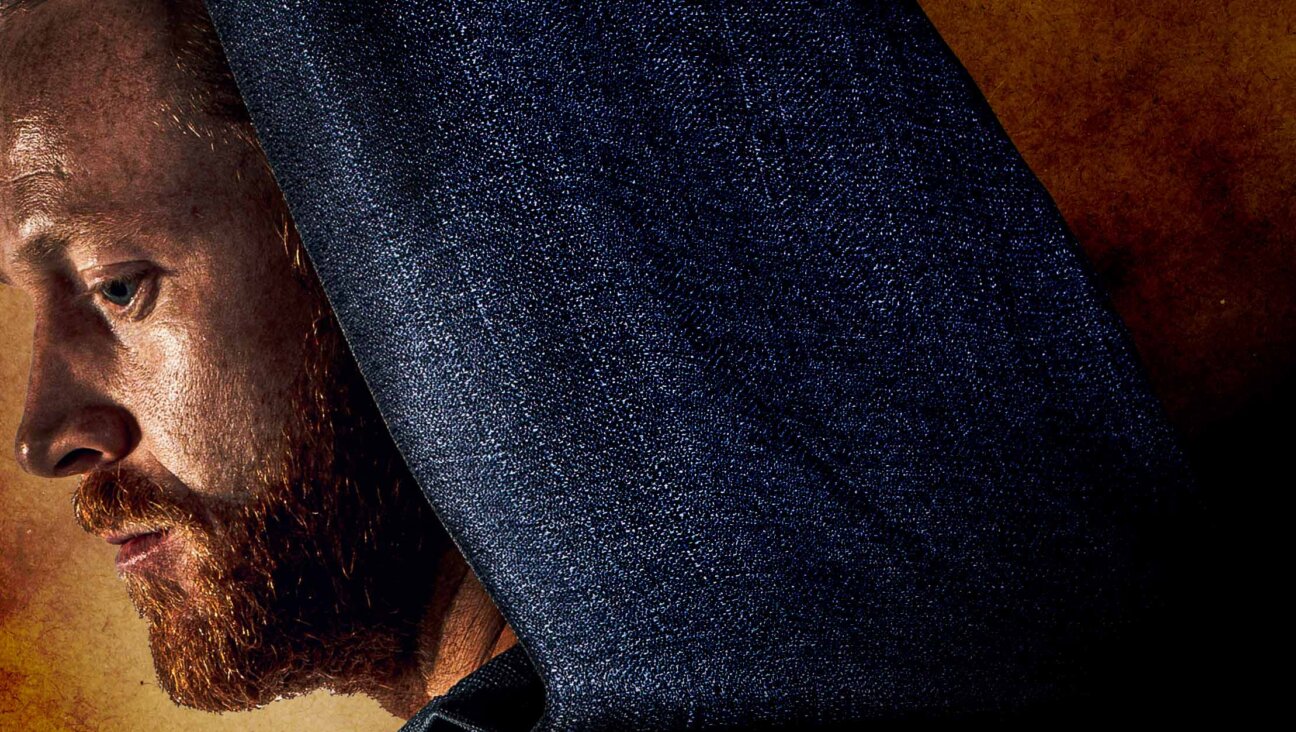Wimpels Made Simple

This is the vertical and horizontal views of the entire wimpel. Entire length is between 10 and 11 feet. Image by Diana Zankowsky

Sacred Sashes: Wimpels were used for Torah wrapping and bris swaddling. The top two words are Mazel Dagim (lucky fishes). The bigger word is Adar. Same astrology signs apply so this is Pisces. Image by Diana Zankowsky
Sidney Jacobson of Chester, N.J., writes:
“My wife recently came into possession of a curious, bannerlike cloth about 8 inches wide and 8 feet long, and with the assistance of two rabbis, we determined that it was called a Wimpel. Yet although it was apparently a presentation made to my wife’s grandfather at his circumcision in 1873, the same rabbis were unfamiliar with its rationale or use. On it is Hebrew lettering that is often ornate to the point of illegibility, while the parts of it that can be made out are enigmatic — as, for example, when alongside my wife’s grandfather’s Hebrew birth month of Adar appears a reference to fish. Why fish? And can you elucidate the Wimpel’s importance and use?”
Wimpel (pronounced “vimpel”) is indeed German for “pennant” or “banner,” and the Wimpel was a ritual object unique to German Jewry and to Jewish communities that were under its influence. It was used in synagogues to tie the Torah scroll after the Torah had been read from, lifted from the lectern and displayed to the congregation by the magbiah, or “lifter,” and rolled shut by the golel, or “roller,” who then held it while it was clothed in its jacket and silver ornaments. Yet though the sometimes decorated length of cloth with which the scroll was bound was generally known by Jews as an avnet, Hebrew for “sash,” the Wimpel was no ordinary avnet. It was considerably longer, which necessitated wrapping it around the scroll several times before tying it, and it was sewn from thin strips cut from a Windel, the square piece of cloth used to swaddle or diaper a male baby after its circumcision.
This curious custom is said to have originated in late medieval times in the Rhineland city of Mainz, where the rabbi was then the renowned Ya’akov Segal (1360–1427). One Sabbath, so the story goes, a circumcision was under way in Mainz’s synagogue, when it was discovered that the mohel had forgotten to bring a diaper in which to wrap the newly circumcised child. Inasmuch as carrying was forbidden to pious Jews on the Sabbath, there could be no question of sending anyone to fetch one — and so the rabbi ordered the child swaddled in an avnet that was removed from a Torah scroll. Afterward, when asked if it could be laundered and used as an avnet again, he ruled that it could be, inasmuch as it had not been profaned but had merely gone from one sacred use to another. In memory of the event, the Jews of Mainz took to donating the swaddling cloths from their circumcisions for avnetim, which they called Wimpel (the German plural is the same as the singular).
Whether this account is truthful or legendary, the custom of the Wimpel spread throughout the German-speaking areas of Europe. The common practice was to embroider the Wimpel with decorative designs and illustrations, as well as with the child’s name and date of birth, and various blessings for his success. On the Sabbath of his third birthday, it was presented, in his name, to the synagogue, where, assisted by his father, he was allowed to be the golel, an honor that was subsequently re-bestowed on him on each successive birthday up to his bar mitzvah. Each male child thus had his own personal “tie” with the Torah that was both symbolic and quite literal, and since synagogues soon accumulated more Wimpel than they had Torah scrolls, the Wimpel were traditionally stored in a cabinet that had 12 drawers, one for each month of the year.
The months of the year also explain the fish on Mrs. Jacobson’s grandfather’s Wimpel. A common illustration on a Wimpel, stitched beside the date of the circumcised child’s birth, was the zodiacal sign of the month in which he was born — and the lunar month of Adar, which usually falls half in February and half in March, has Pisces, or two fish, as its sign. Had Mrs. Jacobson’s grandfather been born a month earlier, his Wimpel would have been decorated with the water buckets of Aquarius; had he been born a month later, it would have had the ram of Aries.
The Wimpel never spread to Eastern Europe from Germany, and it was unknown there, as it was among Sephardic and Eastern Jews, which is why most of us have never heard of it. Indeed, not everyone descended from German Jews has, either, since the practice began to die out in the 19th century and was no longer extensively observed anymore in the 20th. Moreover, since Wimpel were donated to synagogues, the great majority of them were destroyed by the Nazis, along with Germany’s synagogues themselves. The Jacobsons’ Wimpel is thus a rare artifact and will no doubt remain one despite scattered attempts in the contemporary Jewish world to revive the custom and rescue it from oblivion.
Questions for Philologos can be sent to [email protected]
A message from our CEO & publisher Rachel Fishman Feddersen

I hope you appreciated this article. Before you go, I’d like to ask you to please support the Forward’s award-winning, nonprofit journalism during this critical time.
At a time when other newsrooms are closing or cutting back, the Forward has removed its paywall and invested additional resources to report on the ground from Israel and around the U.S. on the impact of the war, rising antisemitism and polarized discourse.
Readers like you make it all possible. Support our work by becoming a Forward Member and connect with our journalism and your community.
— Rachel Fishman Feddersen, Publisher and CEO























